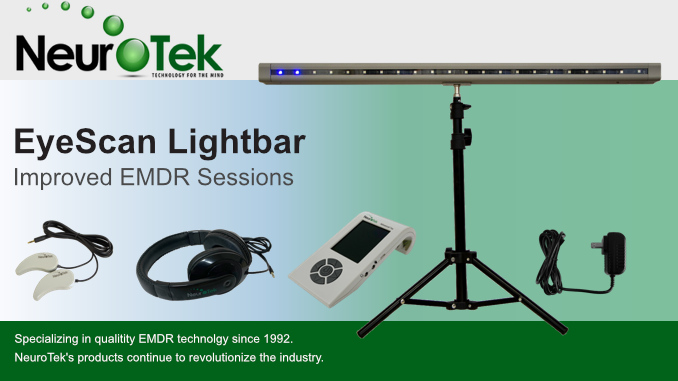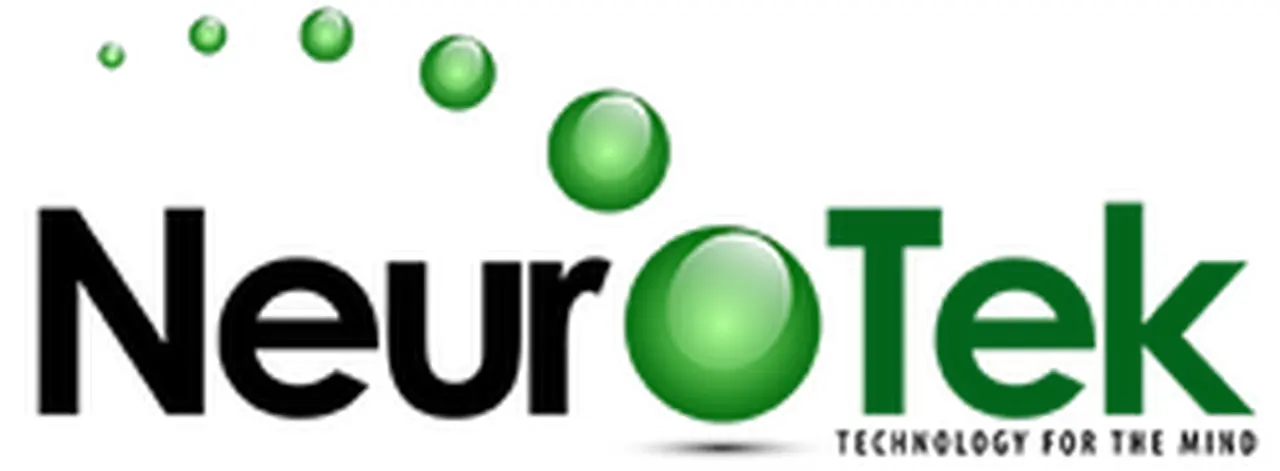EMDR therapy is becoming increasingly recognized as one of the most effective treatments for trauma and post-traumatic stress disorder. Many mental health professionals and researchers have found that it helps patients process traumatic memories in a way that reduces distress and allows for emotional healing. The technique is based on bilateral stimulation, which helps the brain reprocess distressing memories.
While EMDR therapy can be conducted without additional tools, incorporating specialized EMDR therapy tools has been shown to enhance its effectiveness. Tools such as tactile tappers, light bars, and audio stimulation devices help facilitate the process, making it easier for patients to engage with therapy and achieve better results.

What is EMDR Therapy?
EMDR, or Eye Movement Desensitization and Reprocessing, is a structured form of psychotherapy designed to help people recover from traumatic experiences. Unlike traditional talk therapy, which focuses on discussing past events, EMDR therapy actively engages the brain’s natural ability to heal through a process known as adaptive information processing.
The therapy was developed by psychologist Francine Shapiro in the late 1980s. She discovered that certain eye movement patterns helped reduce the emotional impact of distressing memories. Over time, EMDR therapy evolved into an eight-phase treatment model, which guides patients through processing traumatic memories until they become less disturbing.
EMDR therapy is now widely recognized as an effective treatment for post-traumatic stress disorder, anxiety, depression, and other trauma-related conditions. It is endorsed by organizations such as the American Psychological Association and the World Health Organization.
The Science Behind EMDR Therapy Techniques
The effectiveness of EMDR therapy is rooted in its ability to activate the brain’s natural healing mechanisms. When a person experiences trauma, their brain often struggles to process the memory properly. Instead of being stored as a past event, the traumatic experience remains active, leading to flashbacks, emotional distress, and difficulty moving forward.
EMDR therapy techniques use bilateral stimulation to help the brain reprocess these memories. This process involves engaging both hemispheres of the brain through eye movements, tactile sensations, or auditory signals. By doing so, the therapy encourages the brain to integrate distressing experiences in a healthier way, reducing the emotional charge associated with them.
Research suggests that EMDR therapy mimics the natural memory-processing functions that occur during REM sleep. During this stage of sleep, the brain sorts through memories, discarding unnecessary details and organizing significant experiences. EMDR therapy replicates this process in a controlled therapeutic setting, helping patients reach emotional resolution faster than traditional therapies.
Key EMDR Therapy Tools and Their Benefits
EMDR therapy tools are designed to enhance the bilateral stimulation process, making therapy more effective and accessible for a wider range of patients. Each tool provides a unique method of engaging the brain’s natural healing mechanisms. Below are the most commonly used EMDR therapy tools and their benefits.
Tactile Tappers for Bilateral Stimulation
Tactile tappers, also known as buzzers or pulsers, are handheld devices that provide alternating vibrations in each hand. These vibrations create a rhythmic stimulation pattern that helps patients stay engaged in therapy while processing distressing memories.
Benefits of tactile tappers:
- Provide a physical stimulus that helps maintain patient focus.
- Offer a discreet and comfortable alternative to eye movements.
- Ideal for individuals who struggle with visual or auditory cues.
- Help regulate emotional responses during trauma processing.
EMDR Light Bar for Visual Stimulation
An EMDR light bar is a device that features a moving light, guiding patients to follow its movement with their eyes. This tool is widely used in clinical settings and is considered one of the most effective ways to facilitate visual bilateral stimulation.
Benefits of an EMDR light bar:
- Helps patients engage with therapy by focusing on a visual target.
- Allows for adjustable speed and intensity to match patient needs.
- Enhances brain processing by stimulating both hemispheres.
- Useful for individuals who respond well to visual cues.
Audio Stimulation for Auditory Processing
Audio stimulation involves alternating sounds or tones played through headphones. This technique provides an alternative form of bilateral stimulation for individuals who may not be comfortable with eye movements or tactile feedback.
Benefits of audio stimulation:
- Allows patients to close their eyes and focus on internal experiences.
- Provides a calming effect that can reduce emotional distress.
- Suitable for individuals who are sensitive to visual or tactile stimuli.
- Can be used in remote therapy or self-guided EMDR sessions.

Combination of EMDR Therapy Tools for Maximum Effectiveness
Many therapists use a combination of tactile, visual, and auditory stimulation tools to enhance EMDR therapy. The ability to customize treatment based on patient preferences and responses makes these tools highly valuable in trauma recovery.
Benefits of combining EMDR tools:
- Allows therapists to tailor therapy sessions for individual needs.
- Increases comfort and engagement during trauma processing.
- Provides flexibility in therapy for different types of trauma patients.
- Helps patients transition between different forms of bilateral stimulation as needed.
Each of these EMDR therapy tools plays a vital role in improving treatment outcomes. By integrating the right tools into therapy sessions, both therapists and patients can experience a more effective and efficient healing process.
Benefits of Using EMDR Therapy Tools
EMDR therapy tools offer a structured and effective way to enhance trauma treatment. These tools are designed to facilitate the bilateral stimulation process, making therapy sessions more engaging and impactful for patients. Here are some of the key benefits of using EMDR therapy tools.
Enhances Therapy Effectiveness
One of the primary benefits of using EMDR therapy tools is that they help accelerate the processing of traumatic memories. Bilateral stimulation techniques, whether through tactile, visual, or auditory methods, support the brain in integrating distressing experiences more efficiently. Patients often experience a significant reduction in emotional distress within fewer sessions compared to traditional talk therapy.
Reduces Emotional Distress During Therapy
Many individuals undergoing trauma therapy find it difficult to verbally discuss painful memories. EMDR tools provide a non-verbal method of engagement, making it easier for patients to stay present in therapy without feeling overwhelmed. Tools like tactile tappers and light bars offer a structured way to process emotions without direct confrontation with distressing details.
Improves Focus and Engagement in Sessions
Some patients struggle with maintaining focus during therapy, especially when recalling difficult memories. EMDR therapy tools help keep patients engaged by providing a sensory stimulus that holds their attention. Light bars, in particular, allow patients to follow a visual target, while tactile tappers offer a physical sensation that helps them remain connected to the session.
Customizable for Different Clients
EMDR therapy is not a one-size-fits-all approach, and each patient may respond differently to various stimulation methods. The flexibility of using multiple EMDR therapy tools allows therapists to customize treatment based on the individual’s comfort level and responsiveness. Some patients may prefer auditory stimulation, while others may find tactile stimulation more effective. Having access to a range of tools ensures that therapy is adaptable to different needs.
Facilitates Remote and Self-Guided Therapy
With the advancement of EMDR technology, many therapy tools are now available for remote sessions or self-guided use. Patients who are unable to attend in-person therapy sessions can still benefit from EMDR by using at-home tools such as handheld buzzers or audio stimulation apps. This makes trauma therapy more accessible to individuals who may have difficulty reaching a professional therapist due to location, cost, or personal circumstances.
Who Can Benefit from EMDR Therapy Tools?
EMDR therapy tools are widely used by mental health professionals, but they can also benefit a variety of individuals who are undergoing trauma recovery. Some of the key groups that benefit from these tools include:
- Individuals with PTSD and Trauma Survivors – EMDR therapy is highly effective in treating post-traumatic stress disorder, particularly for military veterans, first responders, and survivors of abuse or accidents.
- People with Anxiety and Depression – EMDR therapy tools help individuals process emotional distress and reduce anxiety-related symptoms.
- Therapists and Mental Health Professionals – EMDR therapy tools allow therapists to provide structured and effective sessions, leading to better patient outcomes.
- Individuals with Phobias or Panic Disorders – EMDR techniques can help desensitize patients to specific fears and anxieties.
How to Choose the Right EMDR Tools?
Selecting the right EMDR therapy tools depends on the needs of both therapists and patients. Here are some factors to consider when choosing EMDR tools:
- Quality and Durability – Professional-grade EMDR tools last longer and provide reliable performance during therapy sessions.
- Ease of Use – Tools should be simple to operate, whether they are being used by therapists or patients for self-guided therapy.
- Adjustability – The ability to control speed, intensity, and type of stimulation is essential for effective therapy.
- Compatibility – Some EMDR tools can be used in combination, allowing for a more personalized therapy experience.
NeuroTek offers a range of high-quality EMDR therapy tools, including light bars, tactile tappers, and audio stimulation devices. These tools are designed to help therapists and patients achieve the best possible results in trauma recovery.

The Future of EMDR Therapy
The growing use of EMDR therapy tools is transforming the way trauma treatment is conducted. As research continues to validate the effectiveness of these techniques, more therapists and mental health professionals are incorporating them into their practice. With the availability of advanced tools, patients now have greater access to structured and effective trauma therapy.
If you are a therapist looking to enhance your EMDR sessions or someone interested in exploring EMDR therapy for personal healing, investing in high-quality therapy tools can make a significant difference. Visit NeuroTek to learn more about the latest innovations in EMDR therapy tools and how they can support the healing process.
FAQs
What is EMDR therapy?
Eye Movement Desensitization and Reprocessing (EMDR) is a structured psychotherapy approach that helps individuals process distressing memories, reducing their emotional impact. Developed by Francine Shapiro in the late 1980s, EMDR is recognized for treating trauma and PTSD.
How does EMDR therapy work?
EMDR therapy involves recalling traumatic memories while engaging in bilateral stimulation, such as guided eye movements. This process facilitates the brain's natural healing mechanisms, helping reprocess traumatic memories to reduce their emotional charge.
What conditions can EMDR therapy treat?
While primarily used for Post-Traumatic Stress Disorder (PTSD), EMDR therapy is also effective for anxiety, depression, phobias, and panic disorders. Therapists utilize EMDR to address various challenges beyond PTSD.
How long does EMDR therapy take?
The duration of EMDR therapy varies based on individual needs and trauma complexity. Some individuals experience significant improvement in a few sessions, while others may require more extensive therapy over several months. Generally, EMDR is considered time-efficient compared to traditional talk therapy.
Is EMDR therapy effective?
Extensive research supports EMDR therapy's effectiveness in reducing PTSD symptoms and other trauma-related conditions. It is endorsed by organizations such as the EMDR International Association (EMDRIA) as a beneficial treatment method.
Can EMDR therapy be combined with other treatments?
Yes, EMDR therapy can be integrated with other therapeutic approaches. Combining EMDR with other treatments may enhance overall effectiveness, depending on individual needs and treatment goals.


Leave a Comment